Airports are rarely regarded as fun places to hang out but there is one small suite of rooms in Dublin Airport where all the stress, rage, frustration, panicked relief and sadness of passengers seems even more concentrated. Welcome to Lost and Found.
With tens of thousands of people passing through the concourse and on to flights every day, and with each one of them forced to empty their bags and remove their belts in the name of security, it is hardly any wonder things go missing.
What is more remarkable is the amount of stuff – stuff that is, by any measure, hugely expensive and massively complicated to replace – that simply goes unclaimed.
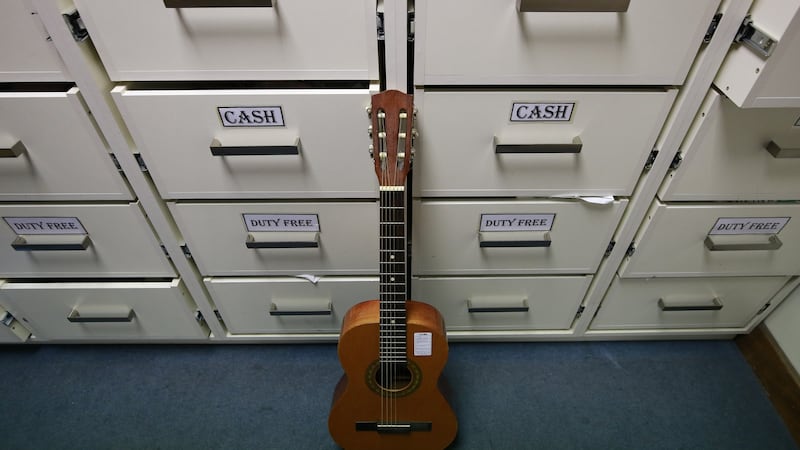
The lost-and-found department in the airport is managed by the Dublin Airport Authority (DAA) and Airport Police. It comprises two large rooms attached to the offices of the Airport Police at one end of Terminal One.
The rooms are small and stuffed with boxes and boxes of passports, mountains of high-end laptops, more sunglasses than it is possible to count, safes full of – mostly small – sums of money and so many belts that, laid end to end, they would mostly likely snake their way around the entire airport campus.
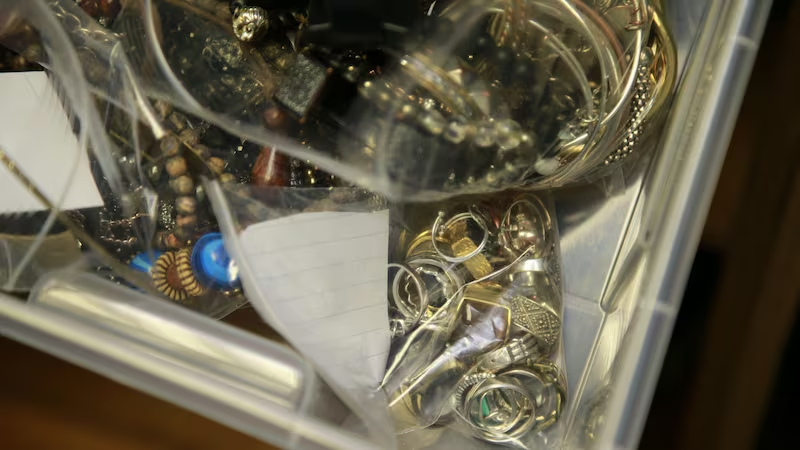
The saddest things are the worn-looking cuddly toys that sit atop a filing cabinet at the back on one of the rooms. These are things that must have been so beloved of little children somewhere that they were brought to the airport rather than being left at home or packed in a suitcase ahead of a journey. The fact that they are still here, languishing in a drab brown and dimly lit office building, means they will probably never be reunited with their owners. "That can lead to devastation for parents and for children," says Brendan Lavin of the airport's police service.
The things that end up here are either handed in by good-hearted members of the public or left behind at security and picked up by staff in routine sweeps.
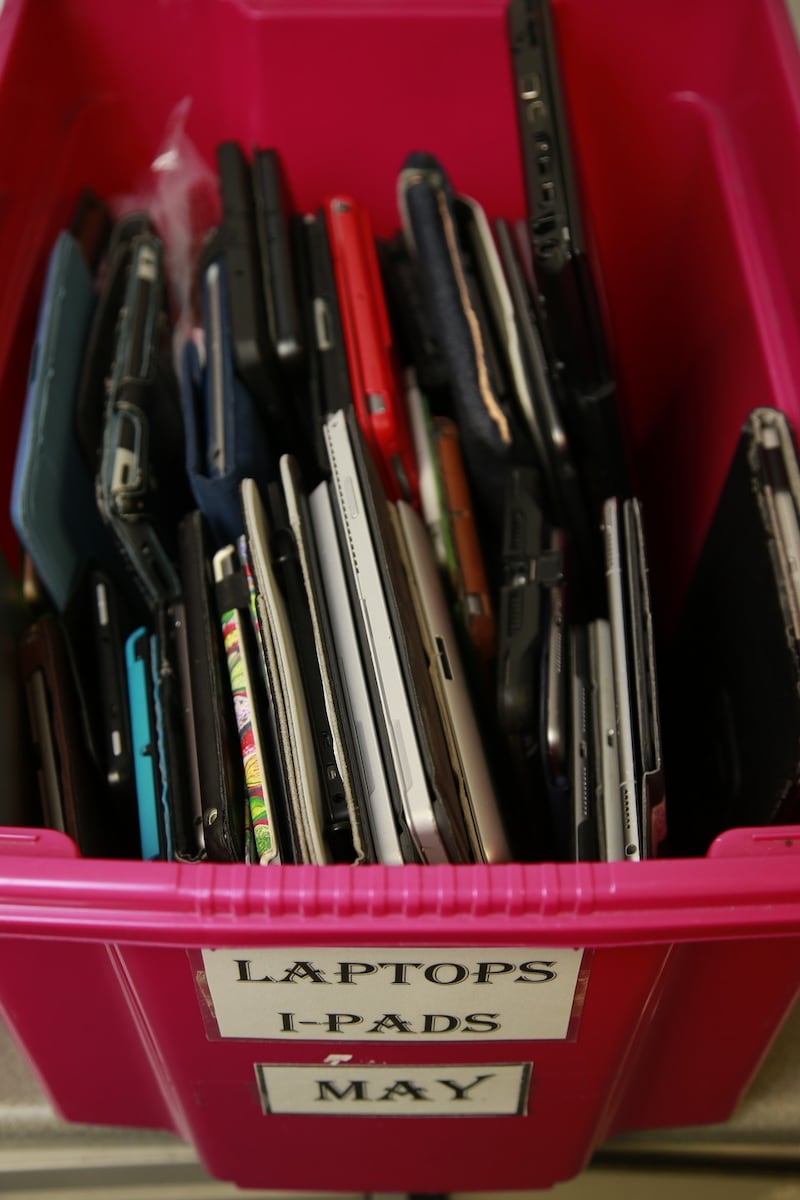
Security is where most people are parted from their possessions. It is the moment of highest stress and pressure when money and belts and laptops and sunglasses and phones and all the rest have to be removed from bodies and decanted from bags ahead of security scans. It is not uncommon for expensive jewellery – including wedding and engagement rings – to be left in toilets by people who have taken them off to freshen up after or before long flights.
Everything that makes its way here is catalogued and stored according to the the month it was handed it in. Then every two or three months – depending on their value – the contents of the rooms are either moved to a different facility or given to charities to be sold.
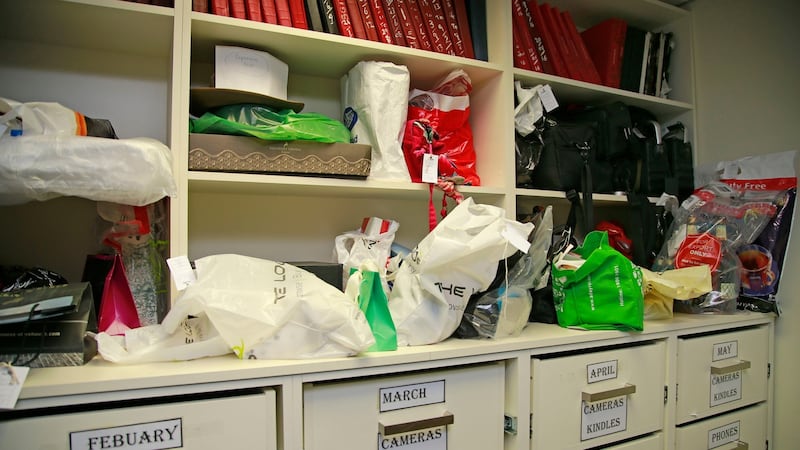
Overflowing boxes
When The Irish Times visits, the box of watches for May and June is overflowing, as are the plastic crates of laptops iPads and phones. Some of the things left behind look very expensive, and it's a wonder people would simply be prepared to abandon them.
And it does all seem to have been abandoned. Will someone who lost an iPad or a smartphone in May really show up in July looking for it? Probably not. It could hardly be that people are put off by the €6 administration charge imposed by the airport to reunite them with their lost goods?
“One of the reasons things go unclaimed is that a lot of people think they have no chance of getting things back once they have been lost,” says Siobhán O’Donnell of Dublin Airport Authority (DAA). “But you’d be surprised how many people leave things with us. I think most people are genuinely good-hearted.”
She also points to a question of timing. “When people are coming through the airport, their minds usually aren’t on taking care of their personal items and they are more focused on getting through check-in and security, and it is only when they get on to the plane that they realise something is missing.”
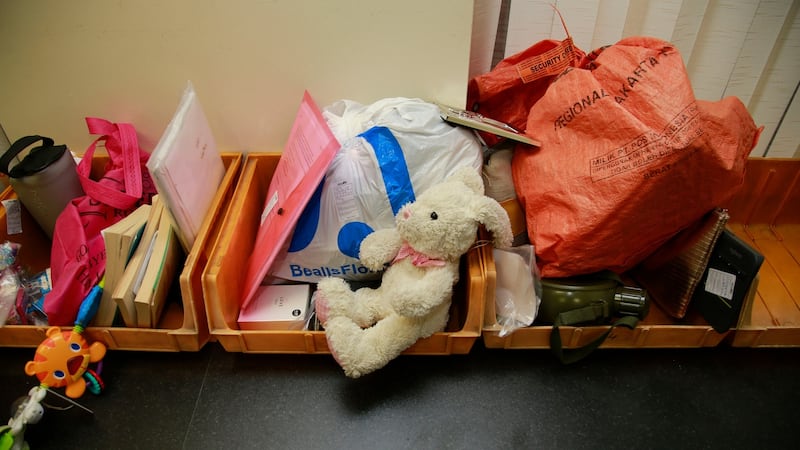
The lost and found appears to be a smooth and efficient, although confusion is never far away. Many of the queries and calls the office deals with are from panicked passengers who have left something on an aircraft.
Lavin makes it very clear – more than once – that the only material they handle is that which has been lost or left on the airport concourse. “Everything that is lost on a plane or any bags that go missing after they have been checked in are the responsibility of the airlines, and the airport has nothing to do with them,” he says.
He accepts that hearing this can be frustrating for passengers, not least because in an era of automation and depersonalisation, the airport lost and found is often “the only way somebody can have human interaction after losing something, and people can get very frustrated when they realise that we can’t help them”.
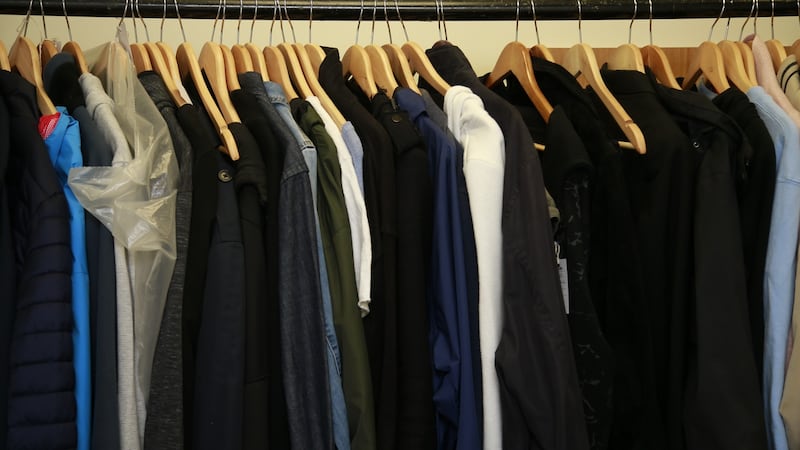
Sometimes passengers don’t help themselves. The mountain of passports is unnecessarily high. “It is always surprising to me to see how many passports don’t have the emergency contact details filled in at the back,” he says. “We have a huge number of passports that don’t have those details and that makes it very difficult for us to reunite them with their owners, so we hold on to them for a period but after that they eventually will go back to the embassies.”
He says perishable items are disposed of immediately.
A pet rabbit that was once handed in was cared for until its owner arrived. A couple of years back a puppy was found on the concourse and the owner never came forward so it ended up being adopted by a member of staff.
The ridiculous
Alongside all the bears, bunnies and belts are all sorts of more ridiculous things. Lavin says his department recently had to find space for a toilet and a cistern after it showed up unaccompanied in the airport.
How is that even possible? He suggests it “was probably in the boot of a car that was going to pick somebody up. Most likely they opened the boot to put luggage in and realised there was a toilet there so they must have taken it out and then forgot all about it.”
A couple of years ago a small tombstone showed up – the owner possibly realised what the excess baggage charges would have cost. It was never reunited with its owner. Thankfully the urn of ashes that showed up separately was.
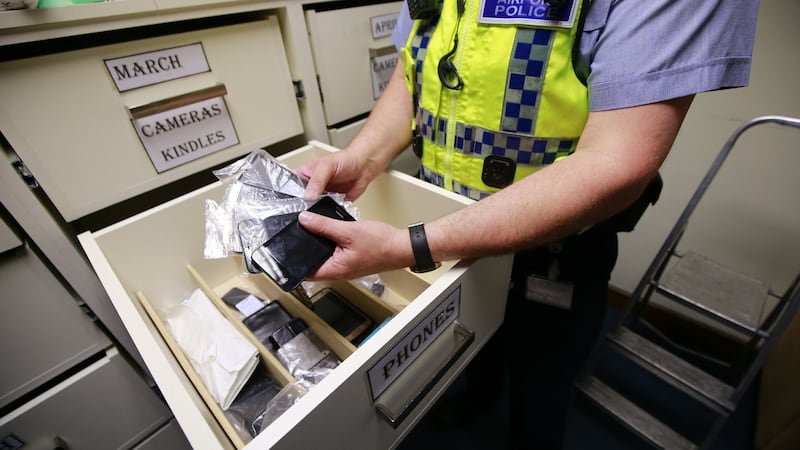
As Lavin walks through the two rooms he points to an oxygen tank, the kind that would normally be strapped to or carried by a seriously ill person. It is a thing you’d think someone would notice was missing pretty quickly. But apparently not. “I don’t know how that ended up here,” he says.
O’Donnell has a theory. “We also get a lot of walking aids and crutches left behind. Maybe miracles do happen in Dublin Airport.”
She points out that the authority's "main job is to get people through the airport but we also happen to find ourselves looking after at what must be one of the largest lost and found department in Ireland. That's not such a surprise when you think there are around 80,000 people coming through the airport every day and at peak times we might have well over 100,000. Even if very small percentage lose something in the airport it will all quickly mount up and most of it will end up with us."
Dedicated website
There is a dedicated section of the DAA website detailing what is to be found in the lost and found, and it is updated within hours of things being handed in – with key details omitted to stop chancers coming in to collect iPads and Mac Books and random pairs of designer sunglasses.
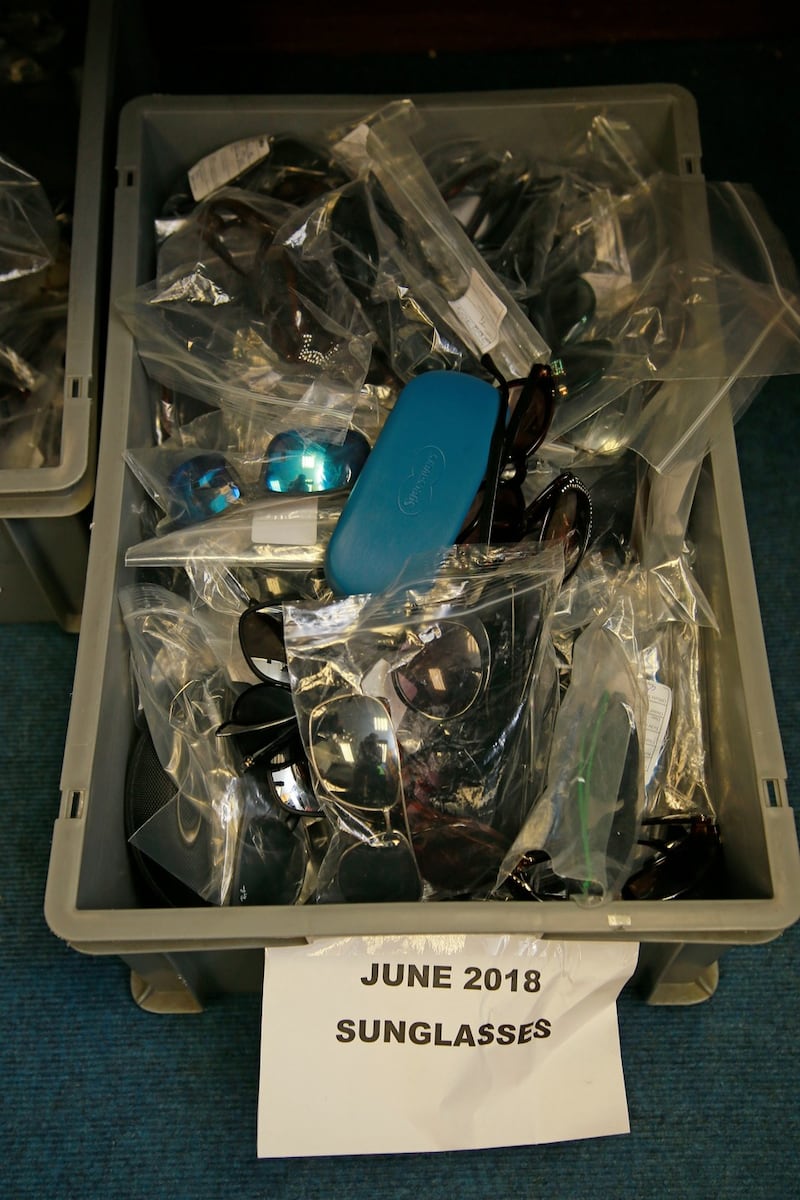
When it comes to cash, there is a slightly different process. Forms are filled in by staff in triplicate, with the details of the finder recorded. If the money is not claimed after three months and a day, the finder can become the keeper. “It is not strange to get envelopes with as much as €4,000 in cash,” Lavin says. “You’d be talking about absolutely all of someone’s spending money for their holidays. People usually notice that missing pretty quickly and come to us,” he says.
There is also a tangled mess of headphones and phone chargers that would bring on a migraine just thinking about how difficult it would be to detangle. “I can’t imagine people will come back for most of these things,” he says. “If they were expensive they might.” As he talks, a phone alarm goes off in a box nearby. It rings incessantly. “Who knows when it will stop,” he sighs.







